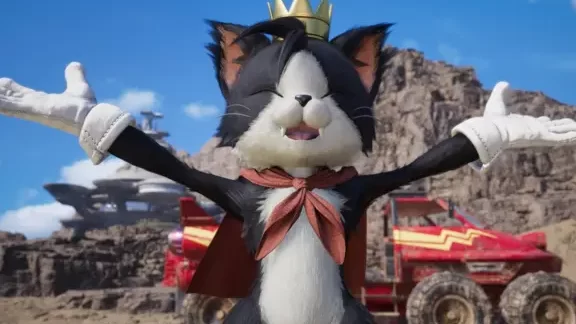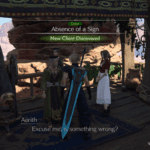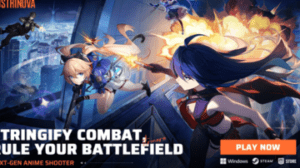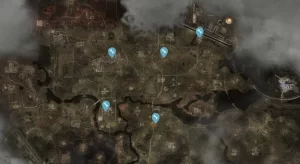Final Fantasy is a “toy box”, says series producer Yoshinori Kitase
“My perspective on Final Fantasy is quite intentional; I don’t limit it to one definition,” states series producer Yoshinori Kitase. This insight came during a discussion about the essence of Final Fantasy, especially considering the diverse opinions among fans regarding what the series should embody.
“We view Final Fantasy as a toy box,” Kitase elaborates. “When you open the lid, you find all sorts of different elements inside—there’s a dinosaur, a football, a baseball, and so much more. The idea is to have a variety of things to play with and enjoy. That, to me, is the essence of Final Fantasy.”
Kitase’s comments came during a preview event for Final Fantasy 7 Rebirth, the upcoming entry in the beloved series and the second installment in the planned trilogy of remakes. The Final Fantasy series is cherished by many, but the seventh entry holds a special place, particularly for its groundbreaking 3D graphics and cinematic storytelling.
Undertaking the modernization of this classic game is no small feat. Kitase, who directed the original title, now serves as the series producer, overseeing the work of director Naoki Hamaguchi as he reimagines the beloved game for both loyal fans and newcomers.
The motivation behind remaking this iconic title is clear. “If a modern player experiences the original, will they feel the same emotional impact that players did 27 years ago when it was fresh and cutting-edge? I doubt it,” Kitase acknowledges. He reflects on the cherished memories of long-time fans, but is also aware that for new players, the original may simply be “that game my dad played,” and he doesn’t want it to remain confined to that role.
“We need to remake the game as a contemporary experience so it can be appreciated in a modern context rather than just as a relic of the past,” he adds.
This rationale is a significant factor in splitting Final Fantasy 7 into a trilogy for the remake project, allowing the team to preserve beloved content while maintaining the high standards fans expect. This approach also provides an opportunity to enhance their skills and incorporate fan feedback, as seen in the open-world design of Rebirth, which has evolved through developer experiences and community input.
“We need to remake the game as a modern game so it can continue to be seen in that light rather than just as an artefact from history.”
The analogy of the “toy box” holds particular relevance for Rebirth. The development team has infused the open world with a plethora of side quests, a card game, mini-games, and more. However, there is a concern that this might detract from the urgency of the main storyline.
To address player concerns, the game will clearly indicate the number of side quests available at any given time, allowing players to manage their gameplay experience effectively. Additionally, the team has decided that side quests will remain accessible regardless of a player’s progress in the main story, alleviating fears of missing out.
Interestingly, the game also incorporates a humorous tone, which was a pleasant surprise during playtesting. “We aimed to enhance the humor within the game,” Kitase explains, reinforcing the toy box concept. “While humor isn’t the defining characteristic of the series, it’s an element that has been present in past titles. With the expansive world map and diverse content, we wanted to integrate a variety of themes and tones.”
Although this ambitious project is daunting, Kitase isn’t discouraged from considering similar future endeavors, although he acknowledges the significant workload involved. “It hasn’t dissuaded me, but we have come to realize that the amount of content in games from the Super Nintendo and PlayStation One eras is much more extensive than we initially remembered,” he admits.
He continues, “The sheer amount of time, effort, and resources required to bring a modern remake to life has far exceeded our expectations, prompting us to think carefully about embarking on another project of that magnitude.”
Kitase also suggests that there are no strict rules dictating that all remakes must adhere to a hyper-realistic art style. “There are definitely opportunities for future creators to approach older games with a range of visual styles and interpretations,” he remarks.
“I think there’s no iron rule that says we have to make everything in a super realistic photo real art style.”
This leads to the inevitable question of a potential Final Fantasy 6 remake. In previous discussions, Kitase indicated that a full modern remake could take around 20 years. However, he is open to the idea of smaller-scale remakes, perhaps utilizing the 2D-HD visual style popularized by other titles.
“I don’t have specific plans,” he states, “but if a developer within the company wishes to utilize that style—or any other approach they feel best aligns with the game they wish to remake—I would be very supportive of that vision. I’d love to see that happen.”
Kitase clarifies that the Final Fantasy 7 remake series operates independently from the main series. Even with the success of this remake trilogy, it doesn’t imply that there will be full remakes of every game in the series running alongside new titles.
New entries in the series must innovate and advance the franchise in meaningful ways. “We have a creator with a vision, completely independent of whether it’s going to be a Final Fantasy title or something else,” Kitase explains. “I then work to expand that vision within the context of what Final Fantasy can become.”
He cites Final Fantasy 16 and the Final Fantasy 7 remake project as examples of this philosophy. For Rebirth, the focus is on Hamaguchi’s concept of “a deeply dramatic story experience” combined with player agency and a vast world. “Both games have introduced new concepts and directions that enrich the series,” Kitase asserts.
These two titles, in particular, have moved the Final Fantasy series further into action-RPG territory with real-time combat—a shift some long-time fans have expressed concern over. However, Kitase emphasizes that the combat system in Rebirth retains the original Active Time Battle (ATB) mechanics while incorporating action elements. “In that regard, the Rebirth and Remake combat systems are designed to appeal to both groups,” he explains. “They satisfy those seeking an action-oriented experience, while also delivering the strategic, cerebral gameplay that older turn-based fans appreciate.”
Ultimately, it all circles back to the concept of the toy box. “I eagerly anticipate what new elements will appear in my toy box,” Kitase concludes. “Directors contribute their ideas, adding new toys to my box. When I open it, I discover something exciting and different. I genuinely look forward to seeing how those ideas manifest.”
And perhaps another exciting addition to that box could be Tekken 8. Fans are eager to see Rebirth’s Tifa as a playable character, given her fitting martial arts background.
“We’ve noticed the excitement on social media regarding this character, and it’s heartwarming to see fans so enthusiastic,” Kitase remarks. “That’s probably all I can say about it.” The hope remains alive!




























Post Comment